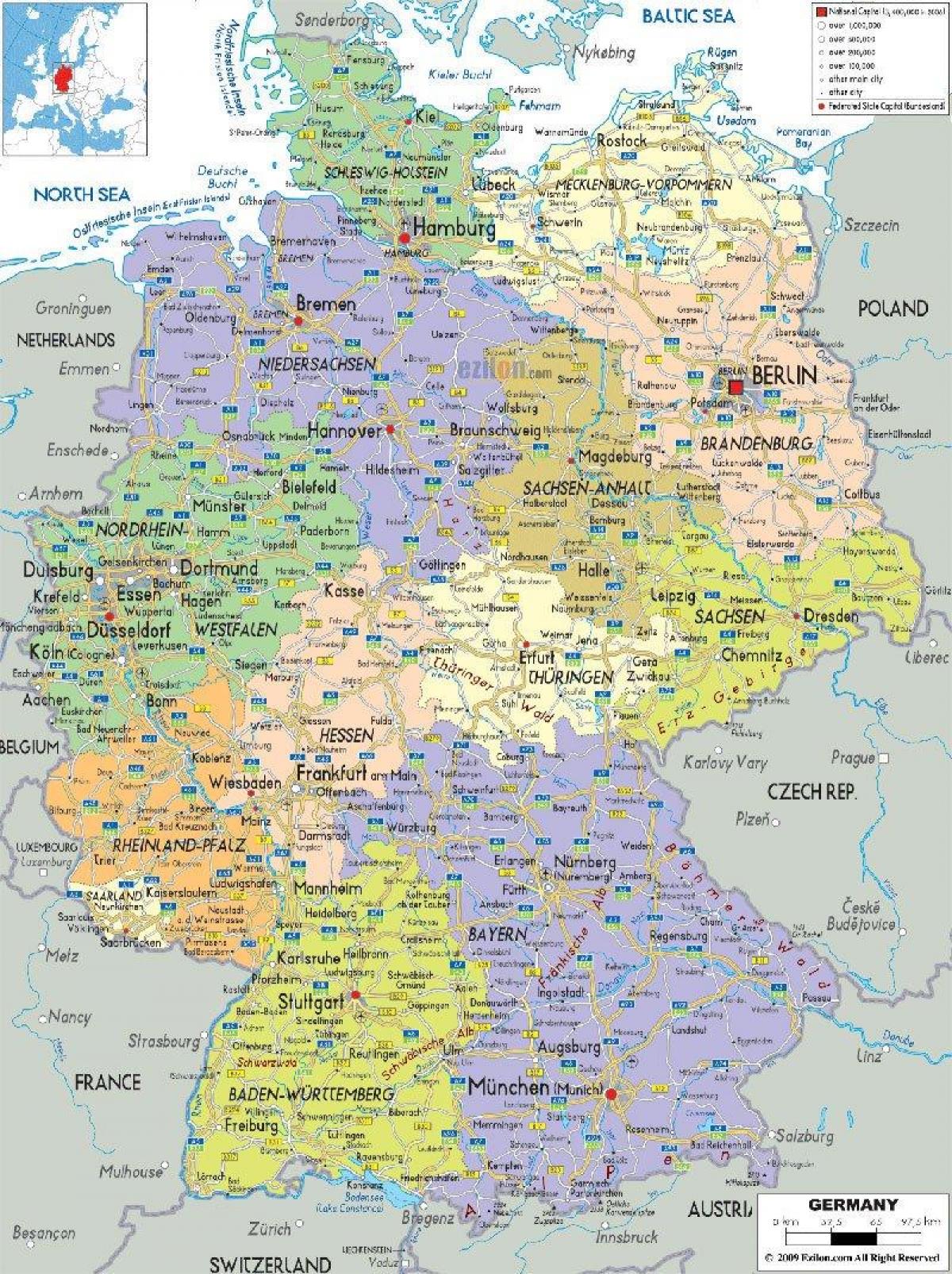search
Germany road map
Road map of Germany with cities and towns. Germany road map (Western Europe - Europe) to print. Germany road map (Western Europe - Europe) to download. Germany has approximately 650,000 km of roads, of which 231,000 km are non-local roads as its shown in Germany road map. The road network is extensively used with nearly 2 trillion kilometers travelled by car in 2005, in comparison to just 70 billion km travelled by rail and 35 billion km travelled by plane. The national roads in Germany are called Bundesstraßen (federal roads). Their numbers are usually well known to the road users, as they appear (written in black digits on a yellow rectangle with black border) on direction traffic signs and in street maps. A Bundesstraße is often referred to as "B" followed by its number, for example "B 1", one of the main east-west routes. More important routes have lower numbers. Odd numbers are usually applied to east-west oriented roads, and even numbers for north-south routes. Bypass routes are referred to with an appended "a" (alternative) or "n" (new alignment), as in "B 56n".
Germany main public roads are maintained by the Bundesländer (states), called Landesstraße (country road) or Staatsstraße (state road) as you can see in Germany road map. The numbers of these roads are prefixed with "L", "S" or "St", but are usually not seen on direction signs or written in maps. They appear on the kilometre posts on the roadside. Numbers are unique only within one state. The Landkreise (districts) and municipalities are in charge of the minor roads and streets within villages, towns and cities. These roads have the number prefix "K" indicating a Kreisstraße.
In the past few decades, much of the freight traffic shifted from rail to road, which led the Federal Government to introduce a motor toll for trucks in 2005. Individual road usage increased resulting in a relatively high traffic density to other nations. A further increase of traffic is expected in the future. Germany possesses one of the most dense road systems of the world as its mentioned in Germany road map. German motorways have no blanket speed limit. However, posted limits are in place on many dangerous or congested stretches as well as where traffic noise or pollution poses a problem. The German government has had issues with upkeep of the roads in the country, having had to revamp the eastern portions transport system since the unification of Germany between the German Democratic Republic (East Germany) and the Federal Republic of Germany (West Germany).


